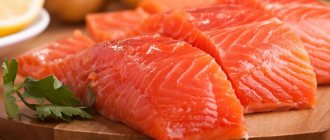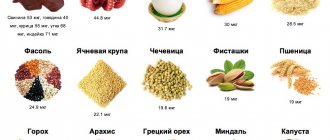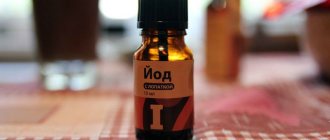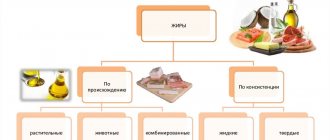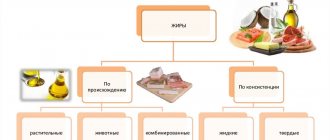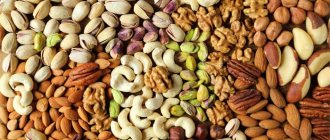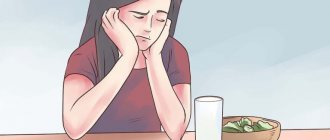Synonyms : Natrii chloridum, salt, table salt, NaCl, sodium chlorate (obsolete name)
Sodium chloride is the name of table salt, which consists of sodium and chloride ions in a 1:1 ratio.
Sodium chloride is colorless crystals, soluble in water. Due to the dissociation of sodium chloride into its ions, an aqueous solution conducts electricity, whereas pure crystalline sodium chloride does not.
Sodium chloride is found in abundance in nature, dissolved in seawater, partly as the mineral halite (rock salt) in underground storage. If a column of salt rises from the surface in the mountains, a salt glacier can form.
Since sodium chloride is the most important mineral for humans and animals (the human body consists of 0.9% salt and loses 3-20 g of it daily), it was mined in prehistoric times and for a long time this mineral remained a fairly expensive commodity.
Foods that contain sodium
Sodium is where there is salt.
This microelement is found in almost all food products in varying quantities - and this, you see, is good news. But basically we get sodium from ordinary table salt, and it is present everywhere in the modern human diet - in ready-made sauces, canned food, semi-finished products, and chemical additives.
I hope, dear reader, that you have already gotten rid of all these “miracles” of industry in your daily menu, or at least have begun to realize that they are not beneficial to your body.
Many raw foodists, switching to live food, refuse salt and even water.
I confess, I myself was so categorical. Although, to be honest, throughout the year and a half of the raw food diet I was wildly craving salty foods, and sometimes I allowed myself to eat salted tomatoes - apparently, my body still required sodium.
Most people today drink purified, “dead” water, devoid of all impurities, including salts, and therefore it is vital for them to replenish their body’s reserves of sodium compounds.
The famous Iranian naturopathic doctor Dr. Fereydoun Batmanghelidj also writes about this in his books. His theory is that almost all of our diseases are caused by dehydration, and, in this regard, he suggests saturating your body with water and... salt every day. Blood is salty!
By thinning the blood and thus washing all the cells of your body, you cleanse the body of toxins and activate vital processes in it.
Believe me, I know what I’m writing about, since I practiced “water feeding” according to Batmanghelidj (for ease of pronunciation, he is also called Dr. Batman) for almost two years.
You simply calculate your norm of water and salt based on body weight - for 1 kg of weight there are 30 grams of pure water, and for each liter of it - ¼ teaspoon of salt.
At the same time, you need to give up drinks that dehydrate the body - coffee, tea, cocoa, store-bought juices. And if you have allowed yourself to be weak, then add to your norm exactly as much water with salt as you drank tea or coffee.
Back to contents
Description
Sodium is a very soft metal that is part of the alkaline group. It has a silvery-white color, is active, and quickly oxidizes in air. In nature it occurs mainly in the form of compounds. In 1807 it was first obtained in its pure form. This metal is endowed with interesting physical and chemical properties. It melts at a temperature of less than 100 degrees.
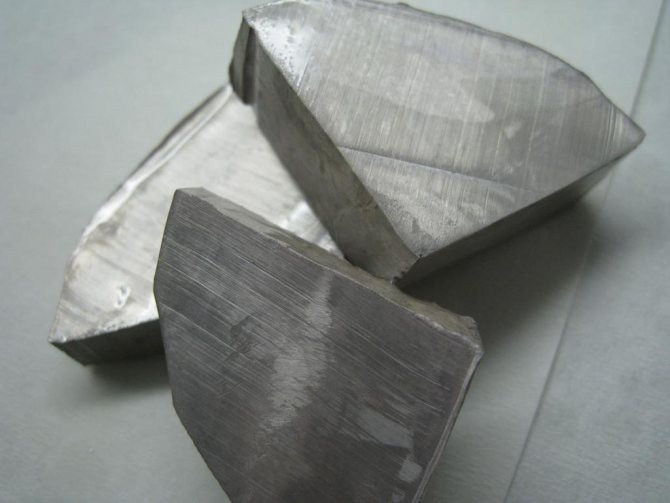
When heated under high pressure it turns red, similar to ruby. Sodium is lighter than water and reacts violently with it, releasing large amounts of heat and hydrogen.
Why is sodium needed in salt?
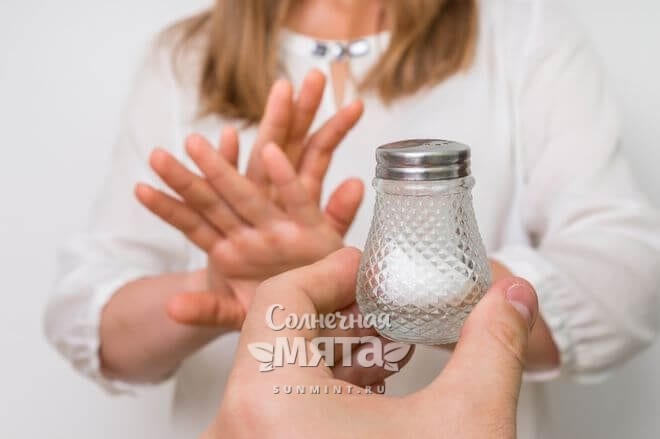
Think before you give up salt.
What many nutritionists advise - drinking up to 8 glasses a day without taking into account the amount of salt - can simply flush sodium out of the body. Cells deprived of this mineral gradually swell, and this is life-threatening.
This statement should especially alert people who are actively involved in sports or who experience heavy physical activity every day.
We'll talk more about the beneficial properties of sodium, including in the composition of salt, a little lower, but now let's figure out which foods are rich in sodium. As I said above, we mainly get this mineral from salt, which contains up to 40% of it.
The amount of sodium in food is determined by the amount of salt added to the dish during its preparation.
However, there are products that contain natural sodium initially, albeit in small quantities. These include all seafood, in our vegetarian case it is seaweed.
Interestingly, 100 g of seaweed contains 520 mg of sodium and is higher in this indicator than all sea creatures that people eat for some reason.
Sodium is also present in legumes, as well as in milk and chicken eggs (if you still drink and eat it!). You can also obtain this vital micronutrient from natural mineral water or homemade sauerkraut.
Don’t forget about soda as a source of sodium - I already mentioned it at the very beginning of my article.
Of course, we won’t use it to make mummies like the ancient Egyptians, but you’ve probably heard that drinking soda daily improves digestion and helps the body get rid of toxins. In addition, it perfectly alkalizes the acidified body.
I just started drinking soda in the morning on the advice of a friend who has been doing this every day for a year and a half.
She noted that the skin became cleaner and the body felt lighter, and it seemed as if it was calling for soda.
Check if your body needs it. In the morning, after brushing your teeth and, I hope, a glass of clean water, which is traditional for all people leading a healthy lifestyle (maybe after reading this water also with salt?!) you need to drink soda water.
Soda water is made like this: a quarter teaspoon of sodium bicarbonate (that is, baking soda) is “quenched” with a small amount of boiling water, and then cold water is added to the glass. The temperature of such a liquid should be approximately 40 degrees, no more.
I emphasize once again: please keep in mind that industrial products - cheeses, crackers, chips, marinades, sauces, semi-finished products and other “goodies” contain a huge amount of sodium.
Remember: a teaspoon of salt fully satisfies our daily sodium requirement.
It is also important to know that sodium is absorbed only in the presence of vitamin D. Thus, if you practice “water feeding” according to Batman, cleanse your body with soda, rid your diet of harmful salty foods, and, moreover, give preference to fresh plant foods in your diet. natural form, then you can be sure that everything is fine with sodium.
But modern people more often suffer from an excess of this mineral, and sodium deficiency is a very rare phenomenon.
Back to contents
Misconceptions about reducing salt intake
- “On a hot and humid day, a person sweats, and there should be more salt in his food.”
By sweating, the body loses very little salt, so even in hot and high humidity conditions, excess salt is not needed; however, drinking plenty of fluids is important. - Sea salt is not “healthier” than industrially produced salt just because it is “created by nature.”
Regardless of the origin of salt, the sodium it contains causes negative health effects. - Adding salt when cooking is not the main source of salt consumed.
In many countries, approximately 80% of the salt in the diet is consumed in industrially processed foods. - You don't have to use salt to make food taste good.
It takes time for a person's taste buds to adapt, but once they get used to lower salt intake, they are more likely to enjoy food and experience a wider range of flavors. - “Food without salt seems bland.”
This may be true at first, but soon the taste buds adapt to the reduced salt content, and the person gets used to appreciating less salty, but more flavorful foods. - “Food that has a lot of salt tastes salty.”
Some foods high in salt do not have a strong salty taste because it is combined with other ingredients that mask the saltiness, such as sugars. To find out the sodium content of foods, you need to pay attention to the labels. - “Only older people should worry about the amount of salt they consume.”
Excessive salt intake can lead to high blood pressure in people of any age. - “Reducing my salt intake could be bad for my health.”
Consuming too little salt is very difficult because it is found in so many everyday foods.
Lack of sodium in the human body

If your stomach is churning, think about sodium.
If you nevertheless managed to “wash” this substance from the body and do not replenish its reserves, then the body can signal you about this with the following signs:
- cramps in the stomach;
- convulsions;
- nausea and vomiting;
- gas formation;
- reduction in body weight due to lack of water;
- increased fatigue;
- muscle weakness;
- dizziness;
- memory problems;
- skin rashes;
- susceptibility to infectious diseases.
As you can see, sodium deficiency, although rare, can still occur as a result of long-term dry fasting, mono-diets, especially salt-free diets, or unwisely organized raw food diets.
This is also facilitated by increased sweating, which can be very dangerous during prolonged heat.
Try to replenish sodium reserves and regulate the body's water-salt balance using Dr. Batmanghelidj's method or by drinking natural mineral water.
Chronic diarrhea or prolonged vomiting are factors that can contribute to excessive sodium excretion from the body. If this phenomenon is prolonged, the person may develop neuralgia.
Back to contents
Main sources of sodium
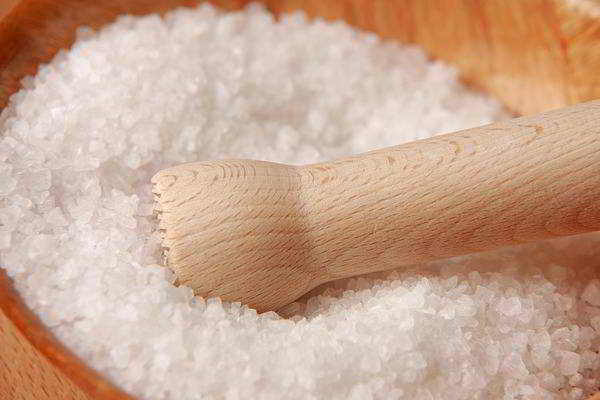
The largest part of it enters the body with ready-made meals, including canned vegetables and sauces, frozen meals, stewed meats, and canned snacks.
It is also found in a lot of condiments, including soy sauce, salad dressings, ketchup, pickles and olives. Bakery.
Remember to read the packaging, monosodium glutamate (msq) also contains Na.
What are the dangers of excess sodium?
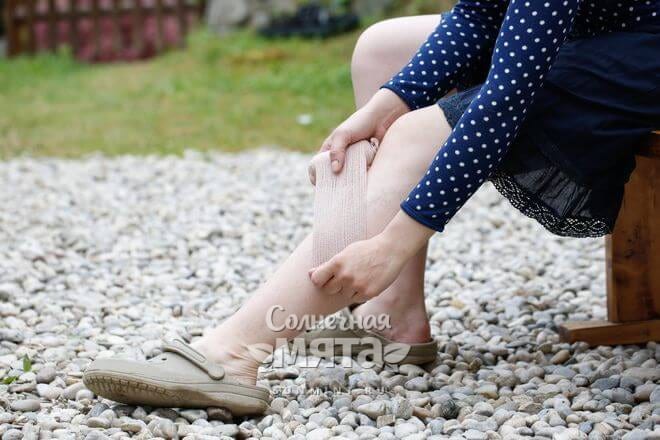
Excess sodium in the body will immediately show itself in the form of edema.
First of all, a large amount of this substance in the body is fraught with accelerated removal of potassium, calcium and magnesium from it.
I’m sure everyone knows about an excess of this mineral, because its most obvious sign is swelling. And here I will again allow myself a small lyrical digression and talk about how important sodium is during pregnancy.
I carried my first son on water with salt according to Batman, that is, I drank up to three liters of water a day and snacked on it with sea salt. As a result, I did not have toxicosis, stretch marks, edema, and my son did not have oligohydramnios and hypoxia; the amniotic fluid was clear. Therefore, sodium is also very important for children.
In general, the entire pregnancy was easy, despite the 20 kg of weight gained and my relatively middle-aged age - 26-27 years. So, those doctors who forbid pregnant women to drink water and eat salty foods are making a big mistake. You just need to do it right!
Other symptoms of too much sodium in the body include feeling thirsty and allergic reactions.
What is happening in our body at this time? An excess of sodium ions, which are designed to bind water, retain too much of it in the body - this is where swelling and high blood pressure come from.
This is how the harmful properties of sodium manifest themselves. This phenomenon is very dangerous, since the cells literally swell with unnecessary fluid and even burst. As a result, scars appear, dropsy develops, and disturbances in the functioning of the kidneys appear.
Everything described is due to the consumption of large amounts of salt, namely unhealthy industrial food. Moreover, an excess of this mineral can occur in people with diseased kidneys, during treatment with hormones and as a result of severe stress, when a lot of the hormone aldosterone is produced, which retains sodium in the body.
Back to contents
Receipt
Sodium chloride can be produced in various ways. Rock salt extraction from underground salt mines, evaporated salt from salt pans, extraction from dry salt lakes and direct evaporation of sea salt from sea water.
The proportion of rock and sea salt is estimated to be approximately 70% and 30% respectively.
In salt mines, the material is crushed underground using crushers of varying grind sizes.
From sea water, evaporated salt of high purity is obtained by evaporation. Today this is done using closed vacuum evaporators arranged in a cascade method, whereby most of the heat used is recovered.
In climatically suitable areas, solar energy is used to evaporate moisture (solar lakes).
Extracting salt from seawater using this method is only economically viable in coastal areas with high solar energy and low rainfall. To do this, seawater passes through flat cascades (salt gardens), in which the salt concentration increases due to natural evaporation. Finally, the precipitated salt is collected and dried.
On the French Atlantic coast, table salt is mined in salt gardens using the ebb and flow of the tides. For this purpose, seawater is directed into flat pools formed on the sandy beach using a complex system. “Fleur de Sel” (“salted flower”) has a special (premium) quality.
The process of extracting salt occurs only on hot and windless days. The salt forms as a thin layer on the surface of the water and is removed manually with a wooden spatula.
Functions of sodium in the human body

Sweating is good and necessary to remove waste from the body.
- Present in the vital fluids of our body - blood, lymph, intercellular space, gastric juice.
- Responsible for the water-salt balance of the body and thus prevents dehydration.
- Participates in maintaining the acid-base balance of the body.
- Necessary for transporting nutrients to cells.
- Supplies carbon dioxide to the respiratory organs.
- Regulates the level of osmotic pressure in our body.
- It is an active participant in protein metabolic processes, which helps maintain a normal level of water saturation in the body.
- Helps activate enzymes of the digestive and endocrine systems, which ensures their normal functioning.
- Takes part in the production of hydrochloric acid, which is known to be necessary for good digestion.
- It has a beneficial effect on the functioning of the heart and blood vessels - maintains an optimal level of blood pressure, promotes vasodilation, and is responsible for the required volume of blood involved.
- It is the coordinator of the transmission of nerve impulses in nerve cells.
- Helps remove waste products from the body.
- Maintains the osmotic concentration of our blood.
That's what sodium is good for. As you can see, you can’t go anywhere without this mineral, and therefore, in connection with the information presented in the article, I want to ask you: how do you feel about salt? Do you use it or do you dismiss this product like the plague?
Daily sodium requirement
The main supplier of sodium (the daily dose does not exceed 4–6 g) is considered table salt. If you consume 10 to 15 grams of it daily, then this will be quite enough. With increased sweating in hot weather and increased physical activity, the need for sodium increases. And it is necessary to reduce its quantity:
- with impaired renal and liver function;
- bone fractures;
- allergic reactions;
- obesity;
- high blood pressure;
- taking medications containing hormones;
- diseases of the pancreas and stomach.
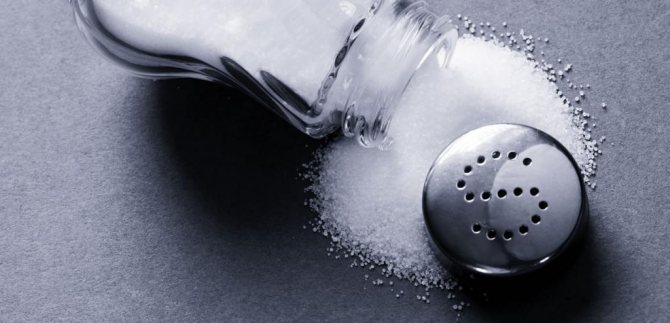
You should always remember that excessive salt consumption, which exceeds 20-30 grams per day, can cause an excess of sodium and lead to serious problems.
Indications for sodium
In some situations, doctors prescribe it to the patient to replenish the balance of a macroelement. This is necessary when you need:
- restore water-salt balance when the body is dehydrated;
- rinse the mucous membranes of the nasal cavity in case of inflammation of the maxillary sinuses, allergies, and acute respiratory viral infections;
- do inhalation of the upper respiratory tract;
- restore the volume of plasma lost during burns and operations;
- improve the patient’s condition with impaired renal and adrenal function;
- carry out antibacterial treatment of wounds;
- washing in case of poisoning.
Beneficial and harmful properties of sodium
Sodium is essential for the proper functioning of our body, however, if overused, it can cause harmful effects.
In fact, in appropriate amounts, sodium provides significant benefits:
- Helps in the treatment of rheumatic pain. Baking soda for areas of the body affected by rheumatism is a well-known “grandmother’s” remedy, but has a scientific basis. In fact, sodium bicarbonate (baking soda) used topically can temporarily neutralize the formation of acids, such as arachidonic acid, involved in the process of triggering inflammation and pain.
- Promotes muscle recovery. After exercise, and especially after intense sweating, there is a massive loss of minerals, including sodium, which can cause changes in contraction, creating muscle cramps and pain. In order to recover, it is enough to eat a small amount of sausage or cheese.
On the other hand, despite its beneficial effects on some organs, especially under certain pathological conditions, sodium can pose a threat:
- In case of diabetes. The reabsorption of glucose from the filtrate is regulated by a special transporter, which works by connecting glucose molecules, on the one hand, and one sodium ion, on the other. The presence of sodium thus facilitates the reuptake of glucose and consequently increases its amount in the bloodstream, exacerbating the hyperglycemia already present in diabetic patients.
- For heart. Sodium, through water retention, increases blood volume and therefore blood pressure, which affects artery walls, a condition known as hypertension, which wears out the heart. It is no coincidence that individuals with hypertension have a much increased risk of cardiac arrest compared to normal subjects.

